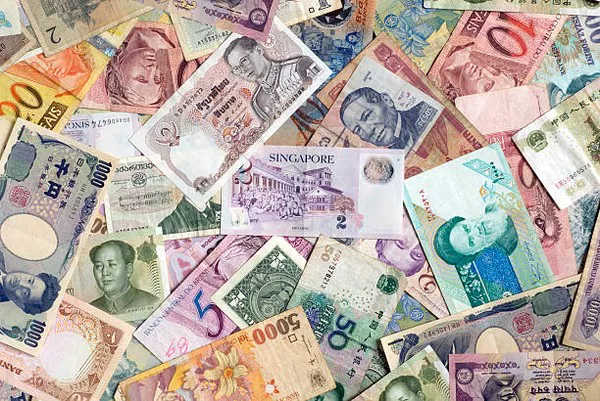In the colorful tapestry of Mexico’s currency system, each banknote tells a story of culture, history, and economic significance. From iconic figures to vibrant motifs, Mexican peso bills represent a tangible reflection of the nation’s rich heritage. Among the array of denominations, one question frequently arises: What is the smallest Mexican peso bill? In this article, we embark on a journey to uncover the answer, exploring the intricacies of Mexico’s currency landscape and the significance of its smallest denomination.
The Evolution of Mexican Currency:
Mexico’s currency system boasts a diverse array of denominations, each with its own unique characteristics and historical significance. From the colonial period to the present day, Mexican banknotes have undergone numerous transformations, reflecting the nation’s economic development and cultural heritage.
During the colonial era, Mexico relied on a mix of Spanish reales and coins as the primary means of exchange. However, it wasn’t until the early 19th century, following Mexico’s independence from Spain, that the nation established its own currency system.
The Banco de México (Bank of Mexico), founded in 1925, serves as the country’s central bank and is responsible for issuing and regulating Mexican currency. Over the years, the Bank of Mexico has introduced various banknote denominations, ranging from the widely circulated 20 peso bill to the less common higher denominations.
Identifying the Smallest Mexican Peso Bill:
In Mexico’s currency system, the 20 peso bill holds the distinction of being the smallest denomination currently in circulation. While there are smaller coins, such as the 1, 2, and 5 peso coins, the 20 peso bill represents the smallest paper currency available.
The 20 peso bill features distinct designs and security features to prevent counterfeiting and ensure its integrity in circulation. It typically includes portraits of significant figures from Mexican history, cultural motifs, and iconic landmarks that reflect the nation’s heritage and identity.
While the 20 peso bill may be the smallest denomination in terms of face value, its practical implications and everyday usage play a crucial role in determining its significance within Mexico’s currency landscape.
Practical Implications and Usage:
Despite its modest face value, the 20 peso bill plays a vital role in facilitating everyday transactions and financial activities across Mexico. From purchasing groceries to paying for public transportation, this banknote offers convenience and flexibility in various contexts.
Additionally, the availability and acceptance of the 20 peso bill vary depending on regional preferences and economic factors. While urban areas may rely more on electronic payments and digital transactions, rural communities often depend on cash for daily expenses and business transactions.
Moreover, the condition and age of a banknote can affect its value and usability. Well-preserved specimens with minimal wear and tear are generally more desirable among users and may circulate more widely in the economy.
Cultural and Historical Significance:
Beyond its monetary value and practical utility, the 20 peso bill holds cultural and historical significance, reflecting Mexico’s diverse heritage and identity. The imagery and motifs depicted on the banknote celebrate iconic figures, significant events, and natural landmarks that shape Mexico’s collective memory.
For example, the obverse side of the 20 peso bill features the image of Benito Juárez, a revered figure in Mexican history known for his contributions to democracy and social reform. This portrayal pays homage to Juárez’s legacy and his role in shaping modern Mexico.
Similarly, the reverse side of the 20 peso bill includes images of various Mexican ecosystems and wildlife, highlighting the nation’s rich biodiversity and environmental heritage. These representations serve as a reminder of Mexico’s natural beauty and the importance of conservation efforts.
Investment Opportunities and Numismatic Trends:
While the 20 peso bill may not command significant value among collectors compared to higher denominations, it still holds potential as a numismatic collectible. Rare and well-preserved specimens, particularly those with unique serial numbers or printing errors, can attract interest from collectors and enthusiasts.
Moreover, the scarcity of certain banknote issues, combined with their historical significance, contributes to their appeal among collectors. Limited edition releases and commemorative issues often command premium prices in the secondary market, driven by demand from both domestic and international collectors.
For investors seeking to diversify their portfolios and preserve wealth, Mexican banknotes represent a tangible asset with intrinsic value and historical significance. Unlike stocks or bonds, which are subject to market fluctuations, rare banknotes offer stability and long-term growth potential.
See Also: 4 Best Places to Get Mexican Pesos in the USA
Conclusion:
In conclusion, the 20 peso bill stands as the smallest denomination in Mexico’s currency system, embodying a blend of practical utility, cultural significance, and historical legacy. While its face value may be modest, its role in facilitating everyday transactions and preserving Mexico’s heritage cannot be overstated.
As Mexico continues to navigate an evolving economic landscape, the 20 peso bill remains a steadfast symbol of the nation’s resilience and identity. Whether used for everyday purchases or treasured as a collector’s item, this banknote serves as a tangible reminder of Mexico’s rich heritage and enduring spirit.


